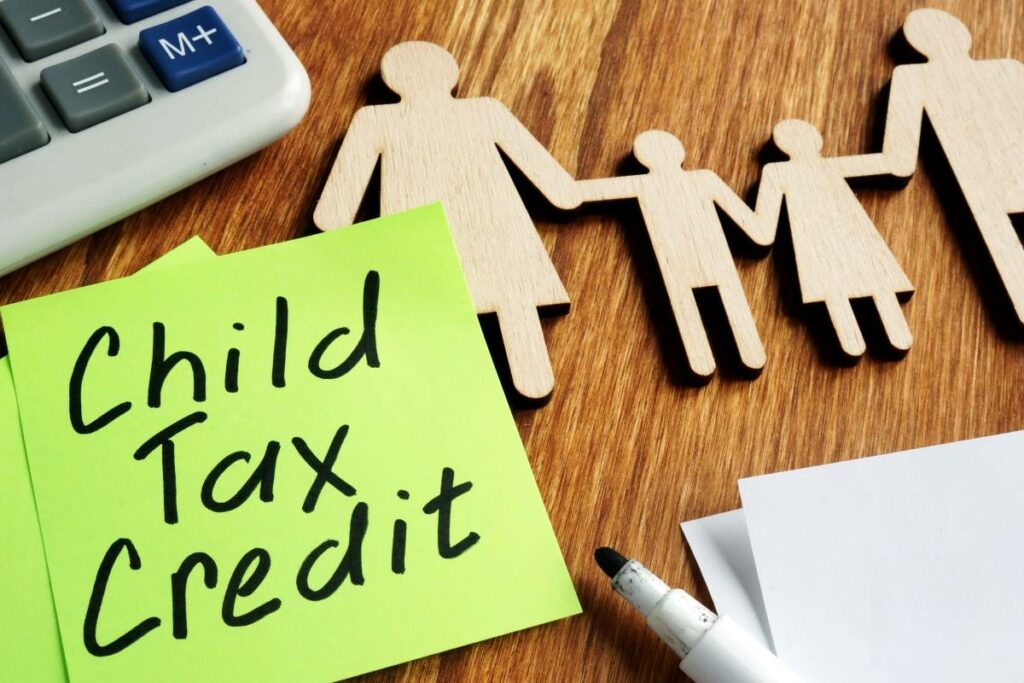Child Tax Credit is one of the 6 benefits that Universal Credit has recently replaced in the United Kingdom. Depending on the number of children families on a low income have, and their yearly salary, they can receive much-needed monetary aid. However, this benefit is not available to everyone: only those already receiving Working Tax Credit qualify to obtain it. If this is your situation and you are already receiving Working Tax Credit, follow this guide to see how to apply.

What Is Child Tax Credit?
This is a financial benefit paid to help families with children. Some may ask themselves, “Is Child Tax Credit the same as Child Benefit?” The answer is no. Child Tax Credit is separate from the child benefit scheme. People are able to claim it for the children they are responsible for until they turn 16 (or 20 if they are in education on a full-time basis).
If you want to find out more about Child Benefits, you can read our article on the subject.
Who Can Claim?
Anyone responsible for a child is eligible. You are responsible if:
- A child resides with you at all times
- You are the principal carer and they usually live with you
- You take care of their meals and provide their pocket money
- The child keeps clothing and toys at your residence
- They are based in a country in the European Economic Area along with Switzerland, and you provide their financial means
How Much Can You Expect To Receive?
A change of rules took place to the Child Tax Credit in 2017. If any children were born after April 6, 2017, Child Tax Credit is given to a maximum of 2 children in the family (exceptions are possible in some situations).
The amount a person can expect to receive will depend on the number of children they have, the year they were born, and the amount the parent(s) earn. Below we point out the different facets of the Child Tax Credit and the maximum amount a person could receive.
Would you like to know how much you could get? Use the tax credit calculator listed here to find out your payment entitlement.
If the Birth of All Children Took Place Before April 6, 2017
On application, you could receive what is known as the Child Tax Credit’s “child element” for each child. This amount is up to a maximum of £2,935 per child for 2022-2023. Additionally, as an extra, you will receive a basic amount (known as “family element“). The “family element” is up to a maximum of £545 for 2022-2023.
If any children are disabled, the parent will receive up to a maximum of £3,545 for each disabled child for the 2022-2023 year (this payment is in addition to the “child element”). In scenarios where any of the children are severely disabled, the parent can expect to receive up to a maximum of £1,430 for each disabled child for 2022-2023 (this payment is a supplement to “child element” and “disabled element.”)
If The Birth Of One Or More Children Occurred On Or Past April 6, 2017
A person may receive a “child element” of the tax credit for a maximum of 2 of their children. For 2022-2023, the child element is set at a maximum of £2,935 for each child. Parents who gave birth to a child before April 6, 2017, will also receive a basic amount (called “family element”), up to a maximum of £545 for 2022-2023.
For a disabled child, the parent will be given up to a maximum of £3,545 for 2022-2023 (in addition to the “child element”). This payment goes by the term “disabled element.” In cases where the child is severely disabled, the parent can expect to receive up to a maximum of £1,430 for 2022-2023 (this is along with “child element” plus the “disabled element” parts).
You can also read: Childcare Options Available in the UK.
Do Exceptions Apply to the 2-Child Rule?
Exceptions do apply to the 2 child rule in some situations. They are:
- Multiple births. If a person gives birth to twins, they can claim the Child Tax Credit for one of the twins. For triplets, Child Tax Credit can be claimed for only 2.
- Adoption. For those people who adopt children, Child Tax Credit can be obtained even if the benefit is already claimed for 2 children in the family.
- Non-Parental Arrangements. A person may obtain Child Tax Credit for children to whom they provide care without being a biological parent.
- A Child Born Without Consensual Conception. If a child is born without a consensual sexual act, the parent is entitled to Child Tax Credit.
How Payments Are Made
Money is paid into the bank account of the parent. They can expect to receive payment weekly or every 4 weeks.
How To Make a Child Tax Credit Claim?
Since the Child Tax Credit claims can only be made by those receiving Working Tax Credit, there isn’t an application form you can just fill out and send somewhere. Instead, you need to report a change to your existing situation. This can be done online through the UK government website.
Wrapping Up
To make the welfare system easier, the government of the UK has been moving benefit claimants to Universal Credit. All new claims for the Child Tax Credit will fall under this umbrella unless a person is already claiming tax credits. All tax credits are expected to operate under the Universal Credit by 2024. Until then, anyone claiming Working Tax Credit can make a claim. This benefit will definitely help with the extra cost of living many people are currently experiencing.





